President Blows Off Concept of ‘White Privilege’
Miami Herald Races to Quash Another Fire
Silence Greets Clearing of Essence Execs
0.7 Percent Diversity Progress in Local TV News
Posture Toward Unions a Topic in NAHJ Election
Union at NPR Wants Diversity Timetables
Simone Oliver Named to Lead Refinery29
Angel Jennings Promoted to AME at L.A. Times
Short Takes
President Trump signs Martin Luther King Day Proclamation in 2018. As he exits, reporters ask, “Mr. President, are you a racist?”
President Blows Off Concept of ‘White Privilege’
The first bombshells from the new book by Bob Woodward on President Trump were understandably about Trump’s public lies about the threat of the coronavirus, but Woodward’s questioning also underscored Trump’s noxious embrace of white supremacy.
“He’s a racist,” Trump’s niece, Mary Trump, told MSNBC’s Ari Melber on Thursday. “He grew up in a racist family with a racist father. I don’t know why this continues to surprise people.”‘
So what does a new example matter?
Details from Woodward’s upcoming book, “Rage,” were made public Wednesday, along with audio clips from the 18 interviews the iconic reporter and author conducted with Trump.
One clip came in the aftermath of the May 25 George Floyd killing by Minneapolis police and the resulting national reckoning on race.
As Janelle Griffith reported for NBC News, “During a conversation on June 19, Woodward, whose father was a lawyer and judge in Illinois, pointed out that he and Trump were white and privileged.
” ‘Do you have any sense that that privilege has isolated and put you in a cave to a certain extent, as it put me and I think lots of white privileged people in a cave and that we have to work our way out of it to understand the anger and the pain, particularly, Black people feel in this country?’ Woodward asked.
” ‘No,’ Trump responded. ‘You really drank the Kool-Aid, didn’t you? Just listen to you. Wow. No, I don’t feel that at all.’
“Woodward described Trump’s voice as mocking and incredulous, according to the [Washington] Post. . . .”
The calling out of Trump’s racial views has not been extensive enough, says April Ryan, White House correspondent for American Urban Radio Networks and a CNN commentator. It hasn’t sufficiently affected “those enablers of his,” Ryan told Journal-isms by telephone Thursday.
She singled out apologists such as Senate Majority Leader Mitch McConnell, R-Ky. There is also Sen. Ted Cruz, R-Texas, a Cuban American, even though Cruz was a target of Trump’s insults when they competed for the Republican nomination in 2016.

New books on Trump further document the president’s racial views.
In his new, “Disloyal: A Memoir,” Trump’s former personal attorney Michael Cohen depicts “the then-candidate [Trump] micro-managing how The National Enquirer fabricated hit jobs on his opponent — especially one cover story alleging that Ted Cruz’s dad, Rafael Cruz, played a role in assassinating President John F. Kennedy,” Joe Mandese reported Thursday for Media Post.
On Wednesday, Trump named Cruz a possibility for a Supreme Court appointment should Trump win re-election. Asked at a lunch that day for his reaction to the revelations from “Rage,” Cruz said that, conveniently, “Haven’t seen the book.”
To be sure, some don’t see any need to press Trump any more on his racism. In 2018, as a doctoral student in American studies, Steven W. Thrasher argued in The New York Times that no tapes were needed to document former Trump aide Omarosa Manigault Newman’s claims that Trump used the N-word.
Thrasher, a writer-at-large at Guardian US, says he feels the same way about the Woodward question.
“I don’t think we need to ask such questions any more,” Thrasher messaged Journal-isms Thursday. “We have seen who Trump is for decades. Racism isn’t just using certain words, having certain thoughts or even engaging just in certain actions. It’s structural and systemic. In trying to keep from renting to Black renters and for trying to condemn the Central Park 5 (without evidence), Trump has shown he will willingly deploy the structures of racism, as a landlord and as president, for many years.”
Cohen’s new book offers more corroboration, as Charles M. Blow wrote Wednesday in his New York Times column: “As a rule, Trump expressed low opinions of all Black folks, from music to culture and politics,” Cohen wrote. “Africa was a hellhole, he believed, and Nelson Mandela, to use but one example, was an object of contempt for Trump. ‘Tell me one country run by a Black person that isn’t a shithole,’ he would challenge me as he cursed out the stupidity of Obama.”
The passage continues:
“When Mandela passed away, years later, Trump told me he didn’t think the South African founding father and national hero was a real leader — not the kind he respected. ‘South Africa was once a beautiful country twenty, thirty years ago,’ Trump said, endorsing Apartheid-era white rule.
“He directed an expletive at Mandela and said, ‘He was no leader.’ ”
Ryan, who has covered four presidents, wrote in 2018 for The Washington Post, “The White House has had issues with me ever since January, when I asked, ‘Mr. President, are you a racist?’ After his response to Charlottesville, after ‘s—hole countries,’ after ‘get that son of a b—- off the field’ and ‘What the hell do you have to lose?’ it’s more than a fair question, it’s necessary. As a black female journalist, I’m going to keep asking it and continue seeking answers. That’s my job, and I am up for it.”
Ryan wasn’t alone. Later, PBS’ Yamiche Alcindor, another Black journalist, asked Trump if his campaign rhetoric was “emboldening white nationalists.” Trump replied, “That’s such a racist question.”
President Trump to @Yamiche: “That’s a racist question.” pic.twitter.com/4bgrMjQFZk
— CSPAN (@cspan) November 7, 2018
There is evidence that exposing Trump’s racism will have little effect on Trump’s base. In fact, it might affirm their sense of grievance about “the other.” Writing in the New York Times on Tuesday, Thomas L. Friedman wrote, “It has been obvious ever since Trump first ran for president that many of his core supporters actually hate the people who hate Trump, more than they care about Trump or any particular action he takes, no matter how awful.”
Friedman quoted Harvard political philosopher Michael Sandel: “In the 2016 election, Trump won two-thirds of white voters without a college degree.”
That shouldn’t prevent journalists from doing their jobs. Writing in January 2018 for The Intercept, Robert Mackey held up Dutch reporters as an example. They collectively pressed Pete Hoekstra, Trump’s then-new ambassador to the Netherlands, after Hoekstra had been seen on a video “insisting that parts of the Netherlands have been surrendered to Islamist radicals who supposedly rule over ‘no-go zones’ for non-Muslims — areas where, he said, Dutch politicians have even been set on fire.”
Hoesktra was forced to acknowledge that he had lied when he told a broadcast reporter that “it was ‘fake news’ to claim that he had said exactly what he had been recorded saying in 2015,” Mackey wrote.
Asking politicians “who make offensive statements to account for their remarks can be a public service, by at least attaching some sort of social embarrassment to making such comments,” Mackey added.
His piece was headlined, “ ‘Mr. President, Are You a Racist?’ Is the Question Reporters Should Never Stop Asking Donald Trump.”
- Peter Baker, New York Times: More Than Ever, Trump Casts Himself as the Defender of White America
- Kelly Candaele, American Prospect: When the Politics of Class Turned Upside Down: Fifty years ago, the Republicans began laying claim to the white working class.
- CultureClap, Latino Rebels: The White Latinos Are at It Again (Sept. 5)
- Arturo Domínguez, Latino Rebels: White Latinos Don’t Exist, Wannabes Do (Sept. 2)
- Earl Ofari Hutchinson, Hutchinson Report: Good Reason Trump Won’t Drink Woodward’s Racial Kool Aid
- Kevin Liptak, CNN: Trump says Department of Education will investigate use of 1619 Project in schools
- Liz Mineo, Harvard Gazette: How textbooks taught white supremacy
- Ibram X. Kendi, the Atlantic: The Violent Defense of White Male Supremacy: Trump and his supporters are defending an America where white men can rule and brutalize without consequence.
- Sarah Maslin Nir, New York Times: Central Park Birder Turns Clash Into Graphic Novel About Racism
- Pew Research Center: Voters’ Attitudes About Race and Gender Are Even More Divided Than in 2016
- Kayla Popuchet Quesada, Latino Rebels: The Violent History of Latin America Is ALL About Promoting Whiteness
- Jeff Rowe, Associated Press: Review: Book looks at what it means to be white in America
- Brian Stelter with Erin Burnett, “Erin Burnett Out Front,” CNN: How Fox News covered the Woodward recordings of Trump (video)
- Brian Stelter, CNN: Analysis: Fox News segment prompts Trump to target diversity training
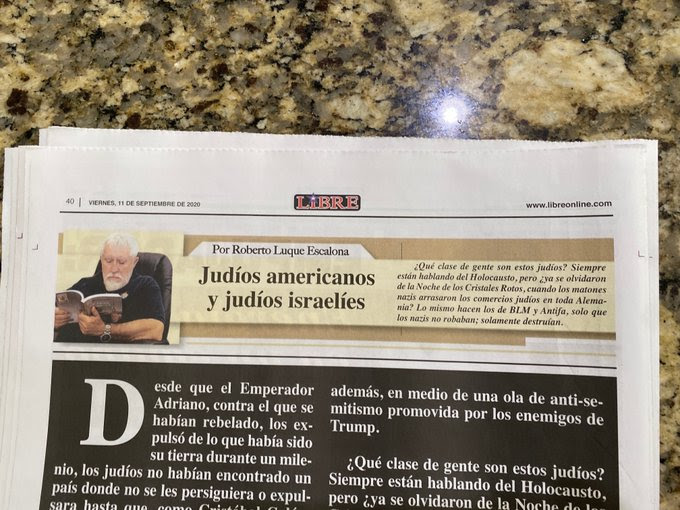
Roberto Luque Escalona’s column said, “Nazi thugs rampaged through Jewish shops all over Germany? So do the BLM and Antifa, only the Nazis didn’t steal; they only destroyed. . . .”
Miami Herald Races to Quash Another Fire
The Miami Herald is severing its relationship with a Spanish-language supplement it distributed that ran a column Friday comparing Black Lives Matter to Nazis, publisher Mindy Marquez tweeted.
“We are appalled by the views expressed in the column that appeared in Libre and condemn it in the strongest terms. We are suspending this relationship pending further investigation, which has already begun,” wrote Marquez, who is also the Herald’s editor in chief.
In the column appearing in the Semanario Libre supplement carried in the Herald’s El Nuevo Herald, Roberto Luque Escalona asked, “What kind of people are these Jews? They’re always talking about the Holocaust, but have they already forgotten Kristallnacht, when Nazi thugs rampaged through Jewish shops all over Germany? So do the BLM and Antifa, only the Nazis didn’t steal; they only destroyed.”
Salguero had posted a tweet with video of Tennessee Titans safety Kevin Byard and quarterback Ryan Tannehill, explaining that the athletes sat out their practice as a show of solidarity against police violence and racial injustice.
“In the video, Tannehill said that ‘this country is founded upon racist ideas with slaves being brought here from the day of foundation,’ ” as Suzanne Gamboa reported Sept. 1 for NBC News.
“Salguero lashed out at Tannehill, paraphrasing him as saying the United States of America was founded upon racist ideas.
“ ‘I am so sick of the America bashing by people who have never lived and would never live anywhere else,’ Salguero said in his tweet. . . .”
- Andres Viglucci, C. Isaiah Smalls II, Rob Wile and Yadira Lopez, Miami Herald: ‘A history of broken promises’: Miami remains separate and unequal for Black residents (Aug. 20)
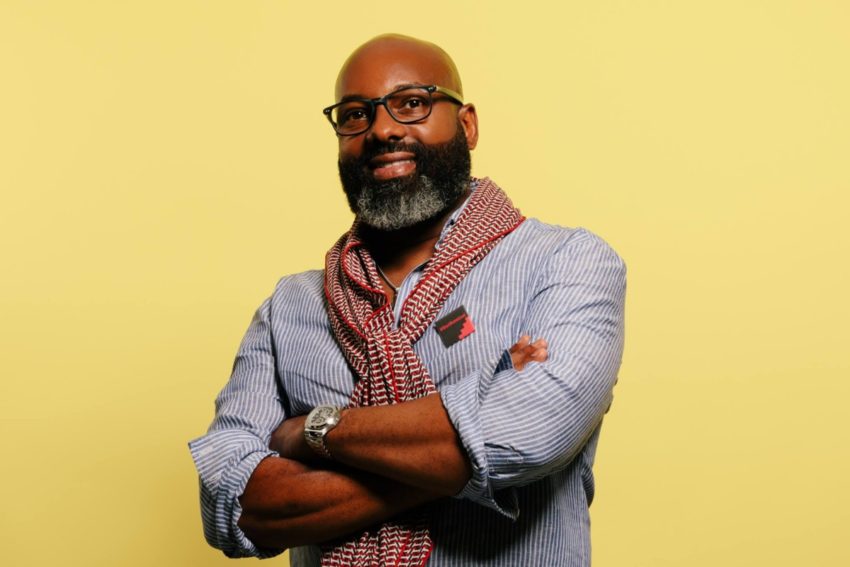
mission of advocating for, investing in, elevating and celebrating Black women and communities . . . .”
Silence Greets Clearing of Essence Execs
A group calling itself Black Female Anonymous that lobbed charges in what media outlets such as the New York Post called “a scathing exposé about Essence magazine” has been silent since independent investigators cleared Richelieu Dennis, owner and chair of Essence Ventures, and other Essence officials of sexual harassment and further wrongdoing.
“After a thorough review of the documents and information collected in our interviews, our investigation did not substantiate BFA’s claims that Mr. Dennis bought the silence of employees, appointed his wife to head HR in order to curb employee complaints, or tried to force employees to sign NDAs [nondisclosure agreements] after a string of layoffs and ‘potentially libelous business activity,’ ” according to the report released by Essence Tuesday from the law firms Proskauer Rose and Morgan Lewis.
Of board member and former chief executive officer Michelle Ebanks, the firm wrote: “We did not find any evidence to support the assertions that Ms. Ebanks bullied employees, laid off employees based on maternity leave, or overlooked qualified Black candidates for promotion. . . .”
A previous report from a different firm released Aug. 17 found that Dennis did not commit the sexual harassment charged by the anonymous group. On June 28, the group posted an essay on Medium.com that said, “The Essence brand promise is fraudulent. The once exalted media brand dedicated to Black women has been hijacked by cultural and corporate greed and an unhinged abuse of power. . . .”
Among those expressing support or concern was the National Association of Black Journalists, which declared June 3 that it “is disheartened about the multiple allegations of sexual harassment and misconduct at publications like ESSENCE, Okayplayer, OkayAfrica and others. . . .”
Adenike Olanrewaju added Tuesday for The New York Times, “The report from Morgan Lewis was not all sunshine, however. Investigators noted ‘a widely shared sentiment that employees feel overworked and unappreciated.’
“ ‘Several witnesses stated that they feel pressured to work incredibly hard without recognition or reward and there are no boundaries or work-life balance,’ the report said. ‘According to a number of employees, much of this work is generated by poor planning and a lack of communication from certain members of management. Based on our interviews, there also is a lack of transparency with respect to pay and promotions.’
“A senior staff member at Essence, who spoke on the condition of anonymity out of fear of retribution, said parts of the Black Female Anonymous essay rang true. ‘A lot of the problems in the letter I have seen: the inefficiencies, the belittlement, the lack of transparency within management,’ the staff member said. ‘You could feel the toxicity.’ . . .”
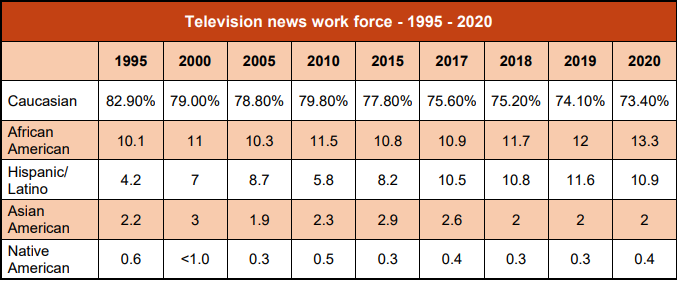
0.7 Percent Diversity Progress in Local TV News
“The percentage of people of color in local TV news reached a record high for the 3rd year in a row,” the Radio Television Digital News Association reported Wednesday.
“However, the percentage of people of color in the local TV [news] workforce is up just 0.7 percentage points, and the gap in representation is down just 0.2 percentage points. In the last 30 years, the percentage of people of color among the U.S. population overall is up 13.4 points, but just 8.8 among the local TV [;news] workforce. The representation gap, which widened after 2005, has been shrinking slowly the last 4 years.
“The workforce of color at non-Spanish language TV stations also reached record levels for the 4th year in a row.
“The percentage of African Americans in local TV news increased the most: 1.3 points. Representation of Native Americans edged up and of Asian Americans held steady. Hispanic representation fell by 0.7.
“Excluding Spanish-language TV stations finds the local TV workforce 25% people of color, the fourth record high in the last 4 years. This includes 13.8% African Americans (up from 12.4%), 7.8% Hispanics (down from 8.8%), 2% Asian American and 0.4% Native American (both unchanged).
“The Bureau of Labor Statistics reports that about 63% of the U.S. workforce overall is non-Hispanic white,17% Hispanic, 13% African American, 6% Asian American and 1% Native American. . . .”
The report, compiled by Bob Papper, adjunct professor of broadcast and digital journalism at the S.I. Newhouse School of Public Communications at Syracuse University, also compiled figures on local television news directors.
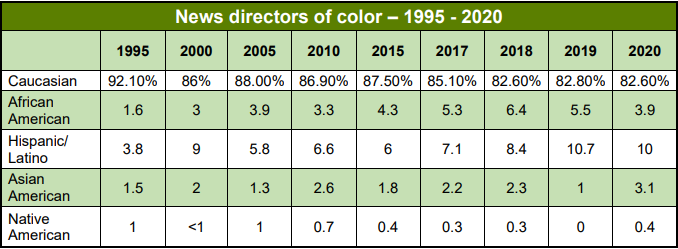
“After a slight dip last year, the percentage of local TV news directors of color edged up slightly to tie 2018 for a record high of 17.4%,” the report said.
“However, those gains were limited to 2.1-point increase in representation of Asian Americans and an increase from 0 to .4% among Native Americans. African American representation among local news directors dropped 1.6 percentage points and representation of Hispanic and/or Latino news directors was down 0.7 points.
“Excluding Spanish-language stations, local news directors are 14.1% people of color vs 13.4% in 2019 and a record 14.3% in 2018. Among non-Spanish language stations, African Americans make up 4% of news directors, down for a second year. Hispanic and/or Latino news directors represent 6.5% of news directors at non-Spanish language stations, down from a record 6.9%.
“Asian American representation among news directors increased from 1.1% to 3.2% and Native American representation increased from 0 to 0.4%. . . .”
- Radio Television Digital News Association: RTDNA Names 2020 Kaleidoscope Award Winners
Today was such a memorable, exciting day for our staff.
Here’s the moment where it became official!
? Captured by @Tonywinton https://t.co/kB4D9i9GSn pic.twitter.com/KS67lz1onI
— One Herald Guild ? (@OneHeraldGuild) November 20, 2019
Posture Toward Unions a Topic in NAHJ Election
The first candidates forum in the election for officers of the National Association of Hispanic Journalists saw posture toward unions emerge as a topic, as the two presidential hopefuls, both managers at their newspapers, spoke in a Zoom call that attracted up to 118 NAHJ members (video).
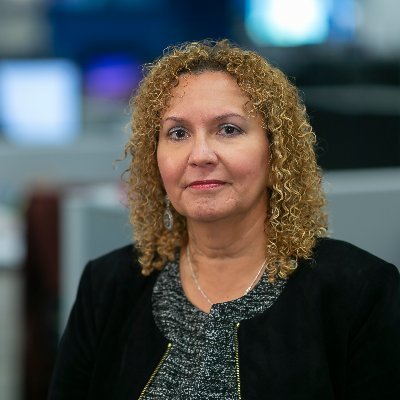 Participants praised the transparency of the format and even suggested it be extended beyond the pandemic. The 20 candidates expounded on the need for more mentoring, “attacking systemic racism in journalism,” and expanding the clout and training of Latino journalists.
Participants praised the transparency of the format and even suggested it be extended beyond the pandemic. The 20 candidates expounded on the need for more mentoring, “attacking systemic racism in journalism,” and expanding the clout and training of Latino journalists.
They testified to the value of Latino journalists helping one another. On the call were such veterans as Maria Elena Salinas, one of the best-known anchors in Spanish-language broadcasting, now a CBS News contributor; and Gilbert Bailon, editor of the St Louis Post-Dispatch and an early NAHJ president.
During and after the forum, some union activists in NAHJ took issue with a statement from Nancy San Martin (pictured, above), managing editor of El Nuevo Herald and current NAHJ vice president/print, that while she supports the right to join a union, as a manager “I do think it sometimes makes the job a little more difficult only because you can’t have the one-on-one interaction” with reporters.
In a 66-24 vote last November, the newsrooms of the Miami Herald and El Nuevo Herald elected to form a union.
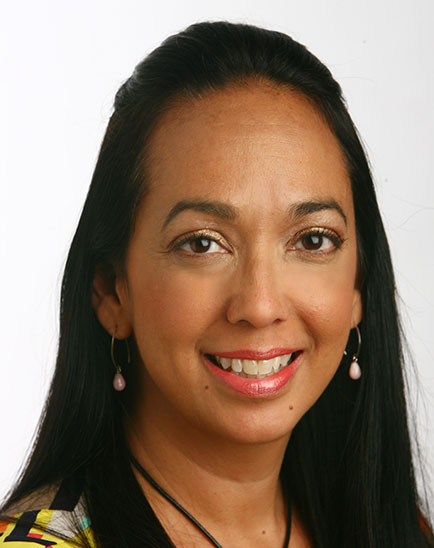 Frances Robles (pictured), a New York Times correspondent and incoming vice chair of the Times-Guild unit council, asked San Martin, “When the Herald decided to join the NewsGuild, there was a lot of talk in and outside the paper, that as a manager, you really saw the unionization effort almost with contempt, that you were against it. A lot of NAHJ members are also Guild members. Can you discuss your position on unionization, and collective bargaining, and how you think you handled that movement?”
Frances Robles (pictured), a New York Times correspondent and incoming vice chair of the Times-Guild unit council, asked San Martin, “When the Herald decided to join the NewsGuild, there was a lot of talk in and outside the paper, that as a manager, you really saw the unionization effort almost with contempt, that you were against it. A lot of NAHJ members are also Guild members. Can you discuss your position on unionization, and collective bargaining, and how you think you handled that movement?”
San Martin replied, “Well, I’m not going to talk about specifics, with things happening with the union, as you know, we’re still in negotiations, we don’t have a contract yet. I believe in the right of people to choose whatever path they want to choose.
“As a manager I do think it sometimes makes the job a little more difficult only because you can’t have the one-on-one interaction that — as you know, Frenchie, because you worked at the Miami Herald for many years, had always been the tradition — that you could have one-on-one conversations with your reporters, and my supervisors, we’ve always had . . . open-door policies. That . . open door policy remains as is. We continue to meet every week. We’re working on — trying to reach a contract that makes sense.
“What we want is the betterment of the newsroom. I have no issue with that. Anytime that anyone steps forward and raises their voices, it’s a good thing, it makes us stronger. I say that over and over again. There’s nothing. Like they say in Spanish, ‘no hay mal que por bien no venga,’ So even when things get tough, things get better. They always do.”
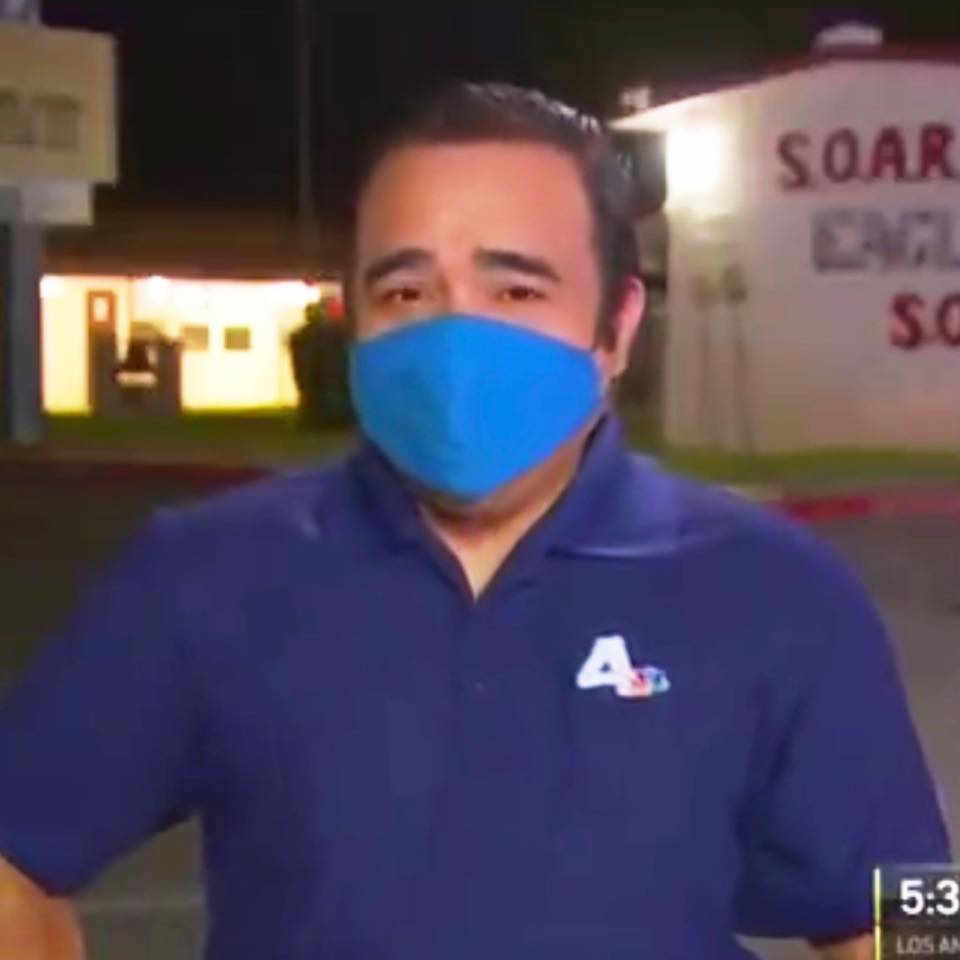 That left some less than satisfied. Mekahlo Medina (pictured), a past NAHJ president and a reporter at KNBC-TV in Los Angeles, messaged Journal-isms, “I’m a Sag Aftra Union member and I stood with my colleagues at the LATimes who formed a guild recently… Id like to know if the President of NAHJ is anti-union? or worse a union buster?”
That left some less than satisfied. Mekahlo Medina (pictured), a past NAHJ president and a reporter at KNBC-TV in Los Angeles, messaged Journal-isms, “I’m a Sag Aftra Union member and I stood with my colleagues at the LATimes who formed a guild recently… Id like to know if the President of NAHJ is anti-union? or worse a union buster?”
Robles messaged Journal-isms, “I was struck by two things that Nancy said.
“She said she was concerned that with the Guild in place, she could no longer meet individually with her reporters. I am not sure why anyone would believe that membership in a union precludes managers from having one-on-one meetings with their reporters. Being a member of the Guild does not mean that your grievance rep shows up every time your editor wants to change your lede or share negative feedback.
“The expression she used, ‘no hay mal que por bien no venga,’ means ‘bad things can have good results’ or essentially ‘every cloud has a silver lining.’ That sounds like she does think unions are ‘bad.’
“I’ve had a great working relationship with Nancy over many years (she used to be my editor and we planned the Puerto Rico conference together), but as the Miami Herald, LA Times and many other newsrooms around the country turn to collective bargaining, her anti-union stance is troubling.”
Asked whether she had been a party to a labor complaint at the Herald, as some had speculated, San Martin told Journal-isms she had not. “An unfair labor practice charge was filed against the Miami Herald by the News Guild at the end of last year. That ULP alleged violations of the NLRA [National Labor Relations Act] by the Miami Herald, through its management team (which included me and a number of managers and HR personnel).
“Rather than expending unnecessary time and resources on litigating the merits of the charge, the Miami Herald elected to resolve the dispute with the NLRB’s [National Labor Relations Board’s] assistance. That resolution included a non-admissions provision that expressly made clear that by resolving the dispute, the Miami Herald did ‘not admit that it ha[d] violated the National Labor Relations Act.’
“As I said at the forum, I believe in the right for people to choose whatever path they want to choose.
“I fully respect employees’ right to organize and be represented by a union if they wish, and I am committed to honoring employees’ ability to lawfully exercise that right.”
 Lopez (pictured) told Journal-isms she did not expect the union issue to become one during the campaign. “But I guess time will tell.
Lopez (pictured) told Journal-isms she did not expect the union issue to become one during the campaign. “But I guess time will tell.
“I think we are actually in agreement on a lot of things. We both believe strongly in NAHJ’s mission: to promote diversity in our newsrooms and to help the next generation of journalists. And we both agree that we need to do more to help those mid-level employees or veteran employees to move into top management,” she said.
“I think the biggest thing that separates us is the issue of transparency as it relates to this year’s election. As you noted, (scroll down) she was on the board that voted to postpone the election. I helped in the effort to gather petitions to get the board to reconsider that decision.”
As for her own union views, Lopez messaged, “Employees have a legal right to organize and a company should not interfere or try to sabotage such an effort. It’s their right. I’m in management now, so if this effort came up, I would be exempt from participation, but when I was a reporter at the San Antonio Light – a Hearst-owned paper – I was a member of the union, paid my dues.
“I understand why people might want to organize. We’re all looking for some security, especially in these times, and a union can provide protection from being arbitrarily dismissed. But it’s very much a personal decision. Every person and newsroom is unique, so I think it’s up to the employees in a given newsroom to decide whether it’s something they want to do, whether it will better their situation, whether they want to take up that cause. As a manager, I would never interfere with that.”
The voting takes place electronically from Sept. 20 to Oct. 2.

Union at NPR Wants Diversity Timetables
Union members at NPR presented management Tuesday with a plan for diversity that includes goals and timetables, such as withholding executive bonuses “unless employee representation of people of color is at least 35% within every individual division.”
The demands, crafted by members of the Screen Actors Guild-American Federation of Television and Radio Artists (SAG-AFTRA), also say, “NPR must build a reporter/correspondent corps that reflects the diversity of the nation we cover.
“To understand the enormity of the problem and the extent of action needed to redress it, the current roster of roughly 100 reporters/correspondents would require, at a minimum, another 11 Black reporters, 19 Latino reporters and 2 Native American reporters to meet that standard.
“And while NPR has made some progress in diversifying editorial staff in the past several years (reducing the percentage of white editors from 81.5% to 74%), there is much more to be done. NPR must publish a pledge and a plan to bring the corps of reporters/correspondents/hosts and editing staff, specifically, up to parity with the nation’s demographics, whether through new hires or promotions and reassignments.”
NPR responded, “We look forward to working with SAG-AFTRA on the key shared objective of increasing diversity, equity, and inclusion at NPR. It is encouraging that many of the ideas in the document align with work already underway or planned at NPR. We want public media to be a place of service and strength, of humility and humanity, and of excellence and inclusion.”
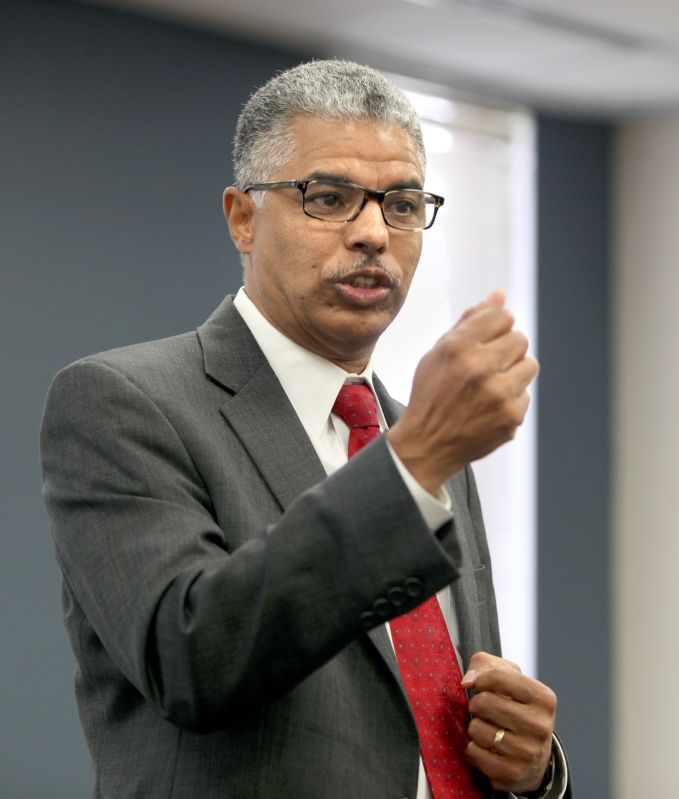 The public radio network had a history of diversity issues when it hired Keith Woods (pictured) from the Poynter Institute in 2010 to lead the organization’s diversity strategy. Woods “has worked with the newsroom on a multi-year effort to increase the diversity of sources. He has trained the staffs of more than 30 public media stations from Canton, New York, to Juneau, Alaska,” NPR said when Woods was promoted to chief diversity officer in January.
The public radio network had a history of diversity issues when it hired Keith Woods (pictured) from the Poynter Institute in 2010 to lead the organization’s diversity strategy. Woods “has worked with the newsroom on a multi-year effort to increase the diversity of sources. He has trained the staffs of more than 30 public media stations from Canton, New York, to Juneau, Alaska,” NPR said when Woods was promoted to chief diversity officer in January.
The network has also published its newsroom staff diversity numbers.
The union also said, “At least 50% of all finalist pools for open positions should come from underrepresented racial and ethnic groups, and hiring managers should be prohibited from moving forward if this is not the case. As NPR has recognized, all hiring panels must be diverse. HR should track finalist pools and hiring panel makeup, publish the overall results and hold individual hiring managers accountable when they fall short. . . .
“Increasing the racial and ethnic diversity of the organization has long been a formal goal at NPR, yet we find little evidence of any substantial progress. From 2015 to 2019, the share of newsroom employees who self-identify as Hispanic or Latino rose by just 3.5 percentage points. The percentage still needs to more than double to come close to reflecting the Latino population in the U.S. The share of Black employees in the newsroom increased by less than 1 percentage point. And the shares of Asian and Native American employees have held essentially flat in recent years.
“In NPR’s newsroom/union positions, our racial and ethnic diversity is concentrated within our lower ranks, as lower-paid producers and news assistants support our much whiter and more prestigious cohort of reporters and editors. Several of NPR’s key news desks are, on a percentage basis, more white than the newsroom itself. And for years, NPR has favored cheaper labor by relying on scores of temporary employees — often younger, often people of color — to produce its journalism. . . .”
- Marianne Combs, Minnesota Public Radio: MPR’s only Black classical host Garrett McQueen fired after being taken off air
- Duchesne Drew, Minnesota Public Radio, and Dave Kansas, American Public Radio: A Note on Garrett McQueen
- April Simpson, Current: Black talents in public media you may not know but should (Aug. 10, 2017)
Simone Oliver Named to Lead Refinery29
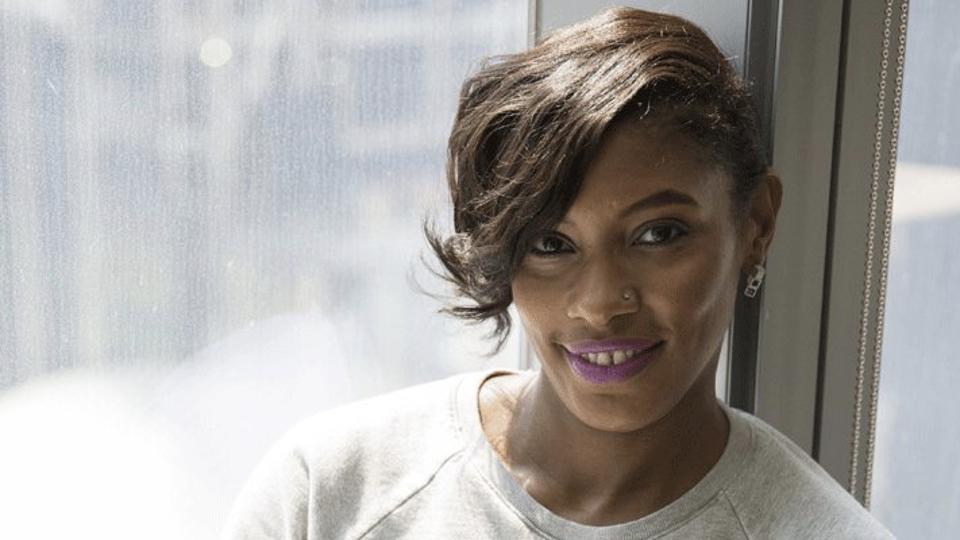 “Refinery29, a fashion and beauty site [among other content], whose previous top editor resigned under pressure in June, has a new global editor in chief: Simone Oliver (pictured), who leads partnerships with magazines and lifestyle brands at Facebook and Instagram,” Marc Tracy reported Wednesday for the New York Times.
“Refinery29, a fashion and beauty site [among other content], whose previous top editor resigned under pressure in June, has a new global editor in chief: Simone Oliver (pictured), who leads partnerships with magazines and lifestyle brands at Facebook and Instagram,” Marc Tracy reported Wednesday for the New York Times.
“Vice Media, the owner of Refinery29, announced Wednesday that Ms. Oliver, who previously worked at The New York Times and Condé Nast, will start Sept. 30. She will oversee Refinery29’s articles, videos, audience engagement efforts and partnerships with clothing companies and other brands. The ‘global’ in her title is a nod to the site’s offices in New York, London and Berlin.
“Ms. Oliver, 38, will succeed Christene Barberich, a Refinery29 co-founder who stepped down after several former employees went public with accounts of workplace discrimination. In a social media post, one former Refinery29 staff member described ‘a toxic company culture where white women’s egos ruled.’ . . .”
Tracy also wrote, “Ms. Oliver, who is Black, was the digital director of the Condé Nast beauty magazine Allure before her three-year stint at Facebook and its sibling site Instagram. At The Times, she was an editor and producer who led several early digital initiatives. In 2011, as the digital editor of Styles, she started @newyorktimesfashion, the paper’s first Instagram account. . . .”
Angel Jennings Promoted to AME at L.A. Times
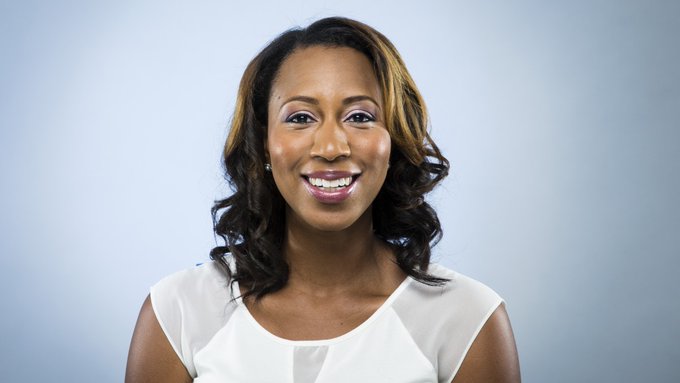 “Los Angeles Times reporter Angel Jennings (pictured) will be the newspaper’s first assistant managing editor for culture and talent, part of the media company’s efforts to reform hiring practices, increase staff diversity and overhaul how it treats Black and Latino journalists and communities,” Samantha Masunaga reported Friday for the Times.
“Los Angeles Times reporter Angel Jennings (pictured) will be the newspaper’s first assistant managing editor for culture and talent, part of the media company’s efforts to reform hiring practices, increase staff diversity and overhaul how it treats Black and Latino journalists and communities,” Samantha Masunaga reported Friday for the Times.
“Jennings, 35, joined The Times nine years ago and is the only Black reporter in the department that covers local and California news. In recent years, she has extensively written about South L.A. Her in-depth coverage of rapper Nipsey Hussle’s death was widely praised for discussing his role not only as a musician but also as a champion of the community where he grew up. Jennings’ story about Hussle’s last moments was The Times’ most-read story of 2019.
“Jennings will join the group of senior-most editors, known as the masthead. In this position, she will oversee recruiting efforts and staff development initiatives. She will also be in charge of internships and The Times’ Metpro diversity fellowships — the program through which she joined the paper.
“In her new masthead position, Angel will oversee our Metpro and internship programs as well as work closely with HR and department heads to help manage a broad range of responsibilities, including tracking, recruiting, interviewing and selecting diverse candidates for job opportunities and advancing the company’s efforts to promote diversity, equity, inclusion and access. She also will work across the newsroom on retention, training and career development efforts. . . .”
Short Takes
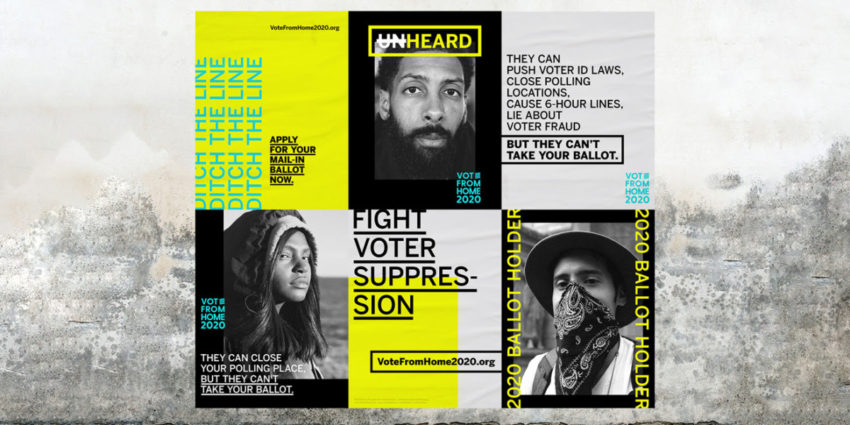
- “If you are looking at this reckoning on race and trying to change your newsroom, I ask you to do something harder: Take a critical look at yourself,” S. Mitra Kalita wrote Wednesday for Nieman Reports. “There are no easy answers to solve for diversity, equity, and inclusion. It must become a way of life in order to become a way of work.” Kalita, who is senior vice president for news, opinion, and programming for CNN Digital, lists 13 suggestions, such as the “Rule of Three.” “You know that old rule of journalism that says if three things are true, it’s a trend? Break that trend if it refers to three white people. Job candidates. Teams. Committees. Direct reports. People in the meeting. The bylines on the stories praised or mentioned. The folks assigned to the shiny new thing. Break the trend. Say and praise the names of non-White talent publicly. Check the room. Change the room. Who’s at the table? Add more voices of the missing perspectives. . . .”
- “A new whistleblower complaint alleges that in late 2018 and early 2019 former senior officials at the Department of Homeland Security sought to inflate the publicly reported number of known or suspected terrorists crossing the border, in a move to increase support for a border wall,” Julia Ainsley reported Thursday for NBC News. “In early 2019, a DHS spokeswoman pushed NBC News to retract an article based on accurate figures the agency had disclosed in a document to Congress in the months prior that were far lower than the nearly 4,000 in a year the administration had been citing publicly. . . .”
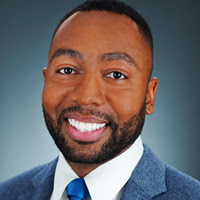 “Tegna Inc. today appointed Grady Tripp (pictured) vice president and chief diversity officer,” Mark K. Miller reported Thursday for TVNewsCheck. “In this newly created position, Tripp will report directly to Tegna President-CEO Dave Lougee and partner with organizational leaders to develop and execute the company’s diversity strategy. . . .” Miller also wrote, Tripp “currently leads strategy and execution for Tegna’s talent acquisition team, in addition to heading a team of human resources professionals supporting television stations in 15 markets. Tripp holds a Bachelor of Science degree in business management and an MBA in finance from Florida A&M University. . . .”
“Tegna Inc. today appointed Grady Tripp (pictured) vice president and chief diversity officer,” Mark K. Miller reported Thursday for TVNewsCheck. “In this newly created position, Tripp will report directly to Tegna President-CEO Dave Lougee and partner with organizational leaders to develop and execute the company’s diversity strategy. . . .” Miller also wrote, Tripp “currently leads strategy and execution for Tegna’s talent acquisition team, in addition to heading a team of human resources professionals supporting television stations in 15 markets. Tripp holds a Bachelor of Science degree in business management and an MBA in finance from Florida A&M University. . . .”
- “In a joint effort by FCC Commissioner Geoffrey Starks and FCC Chairman Ajit Pai, the Commission has created the Early Career Staff Diversity Initiative to advance equitable opportunities for underrepresented undergraduate, graduate, and law school students . . .,” the commission announced on Thursday. “For the last several years . . . the Commission has only offered voluntary, unpaid internships. As a result, otherwise qualified students may decline to pursue these opportunities, including students from underrepresented communities. . . .” The new internships are paid.
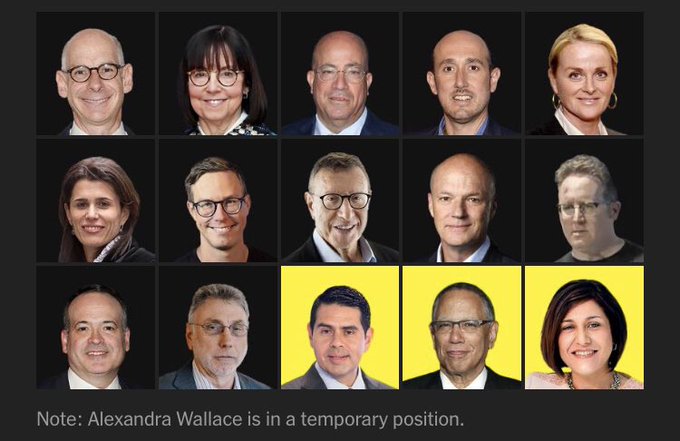
“15 people direct major news organizations. 3 are Black or Latino,” reports a New York Times project.
- A “team of New York Times journalists began exploring the racial balance of the most powerful executives, elected officials, police chiefs and others who wield tremendous authority,” Denise Lu, Jon Huang, Ashwin Seshagiri, Haeyoun Park and Troy Griggs reported Wednesday for the Times. They also wrote, “The findings were stunning: Of the 922 executives and people in prominent positions reviewed by The Times, about 80 percent are white. About 40 percent of Americans identify as Black, Hispanic, Asian, Native American, multiracial or otherwise a person of color, yet 20 percent of the nation’s most powerful people surveyed by the Times fall in that category. And where there have been signs of progress, greater diversity has not always translated to more equal treatment. . . .” The reporting includes a news-media category.
- “More than a dozen companies, including Zillow and M.M.LaFleur, are promising to add at least one Black director to their boards within the next year, as businesses across America slowly get their leadership to look more like the customers they serve,” Stan Choe reported Wednesday for the Associated Press. “The companies all made the pledge as part of the launch of an initiative by The Board Challenge, which is pushing to get more diversity into boardrooms. The Board Challenge’s co-founders will check in with each of them after six months and again at 12 months to monitor their progress, while also helping them to find candidates. . . .”
 “A prize-winning journalist at The Washington Post has been named vice president and executive editor at Crown, a prominent division of Penguin Random House where authors include Barack and Michelle Obama,” Hillel Italie reported Tuesday for the Associated Press. “Madhulika Sikka (pictured) will acquire and develop books on subjects ranging from politics to entertainment, the publisher announced Tuesday. Sikka, who will join Crown next month, is currently executive producer of audio at the Post and previously worked at NPR and with Ted Koppel for ABC television’s ‘Nightline’ among other media outlets. . . .”
“A prize-winning journalist at The Washington Post has been named vice president and executive editor at Crown, a prominent division of Penguin Random House where authors include Barack and Michelle Obama,” Hillel Italie reported Tuesday for the Associated Press. “Madhulika Sikka (pictured) will acquire and develop books on subjects ranging from politics to entertainment, the publisher announced Tuesday. Sikka, who will join Crown next month, is currently executive producer of audio at the Post and previously worked at NPR and with Ted Koppel for ABC television’s ‘Nightline’ among other media outlets. . . .”
- “The ABC Owned TV stations, WABC New York, KABC Los Angeles, WLS Chicago, WPVI Philadelphia, KTRK Houston, KGO San Francisco, WTVD Raleigh-Durham and KFSN Fresno, have organized a one-day-only virtual census phone bank in partnership with the Hispanic Federation and with the support of the U.S. Census Bureau for a nationwide outreach” that was to be held on Sept. 9, Paul Greeley reported Wednesday for TVNewsCheck.
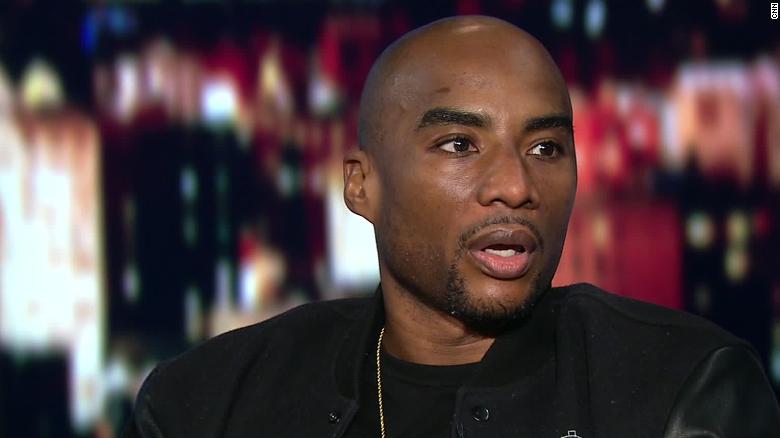 “Charlamagne tha God (pictured) inked a partnership with iHeartMedia to launch the Black Effect Podcast Network, anchored by his own syndicated radio show ‘The Breakfast Club,’ ” Todd Spangler reported Wednesday for Variety. “The Black Effect Podcast Network is slated to debut this fall with 18 podcasts on iHeartRadio and other podcast platforms, curated by Charlamagne. According to iHeartMedia, the venture is positioned to become the world’s largest podcast publisher dedicated to Black listeners and voices in Black culture. . . .”
“Charlamagne tha God (pictured) inked a partnership with iHeartMedia to launch the Black Effect Podcast Network, anchored by his own syndicated radio show ‘The Breakfast Club,’ ” Todd Spangler reported Wednesday for Variety. “The Black Effect Podcast Network is slated to debut this fall with 18 podcasts on iHeartRadio and other podcast platforms, curated by Charlamagne. According to iHeartMedia, the venture is positioned to become the world’s largest podcast publisher dedicated to Black listeners and voices in Black culture. . . .”
- “AT&T is aiming to increase cultural diversity in its programming with plans to add Black News Channel (BNC) and CLEO TV to its AT&T TV and AT&T TV NOW streaming services,” Stephen Beale reported Aug. 28 for thestreamable.com. “The company announced on Friday that DirecTV will begin carrying BNC on August 31. But at some point ;in the near future,’ BNC will also be added to the streamers, the company said. . . .”
- “
 During one of the biggest news events in history . . . Ann Curry (pictured), the former cohost of the Today show, is spending the COVID-19 shutdown in her Connecticut home, where she’s been in quarantine with her husband, tweeting,” Carrie Battan wrote Thursday for Elle. She’s “used her days at home trying to pinpoint the most verifiable information about the pandemic to disseminate to her 1.5 million followers. It’s not exactly the gilded celebrity pedestal she once occupied, but like everything Curry does, it’s earnest, honest work. . . .”
During one of the biggest news events in history . . . Ann Curry (pictured), the former cohost of the Today show, is spending the COVID-19 shutdown in her Connecticut home, where she’s been in quarantine with her husband, tweeting,” Carrie Battan wrote Thursday for Elle. She’s “used her days at home trying to pinpoint the most verifiable information about the pandemic to disseminate to her 1.5 million followers. It’s not exactly the gilded celebrity pedestal she once occupied, but like everything Curry does, it’s earnest, honest work. . . .”
- “Former Florida gubernatorial candidate Andrew Gillum is breaking his silence,” Alexis Frazier wrote Thursday for WPLG-TV in Pembroke Park, Fla. “The 41-year-old husband and father hadn’t spoken [publicly] since a wild night several months ago at a Miami Beach hotel. But he sat down with syndicated TV host Tamron Hall for an interview that will air Monday. Part of it aired Thursday on ‘Good Morning America.’ . . .”
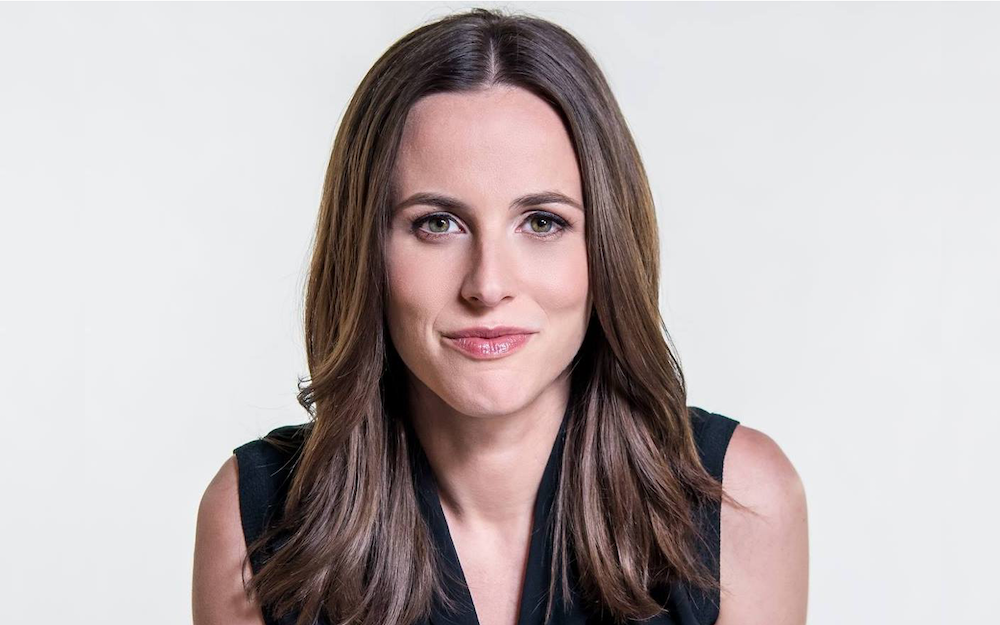
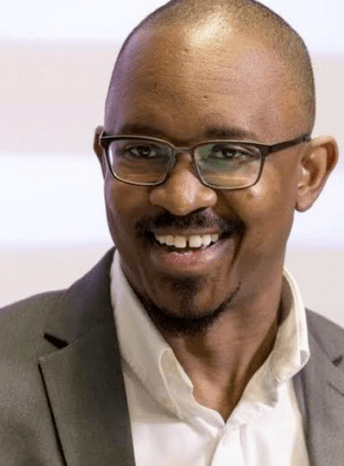 On Sept. 19, MSNBC rolls out a new weekend prime-time lineup featuring anchors Alicia Menendez and Joshua Johnson (pictured), the network announced Thursday. “American Voices with Alicia Menendez” will air on Saturdays and Sundays from 6 p.m. to 8 p.m. ET. “The Week with Joshua Johnson” will air Saturdays and Sundays from 8 p.m. to 10 p.m. ET. Anchor Yasmin Vossoughian who will host “MSNBC Live” Saturdays and Sunday from 3 to 5 p.m. ET. “PoliticsNation” with the Rev. Al Sharpton remains on Saturdays and Sundays at 5 p.m. ET.
On Sept. 19, MSNBC rolls out a new weekend prime-time lineup featuring anchors Alicia Menendez and Joshua Johnson (pictured), the network announced Thursday. “American Voices with Alicia Menendez” will air on Saturdays and Sundays from 6 p.m. to 8 p.m. ET. “The Week with Joshua Johnson” will air Saturdays and Sundays from 8 p.m. to 10 p.m. ET. Anchor Yasmin Vossoughian who will host “MSNBC Live” Saturdays and Sunday from 3 to 5 p.m. ET. “PoliticsNation” with the Rev. Al Sharpton remains on Saturdays and Sundays at 5 p.m. ET.
- “Chicago is roughly one-third Black, one-third Latino, and one-third white. And yet most major media coverage of the city is mainstream-focused, which can often mean white,” according to WTTW-TV in Chicago. Brandis Friedman “is the host of the new Chicago Tonight: Black Voices, which launches alongside Chicago Tonight: Latino Voices on Sunday, September 13 and Saturday, September 12, respectively. Latino Voices will be hosted by Hugo Balta, News Director for WTTW News and Executive Producer of Chicago Tonight.” Balta is also president of the National Association of Hispanic Journalists.
- “In 1968, America was embroiled in protests over civil rights and the Vietnam War,” Tambay Obenson reported Thursday for IndieWire. “In that tumultuous time, ‘The Tonight Show’ host Johnny Carson turned over hosting duties for an entire week to actor and activist Harry Belafonte. His cast of guests included Martin Luther King Jr. and Bobby Kennedy, just months before they were assassinated, during a week that’s been mostly lost in American history. Thankfully it’s now being revisited in a new Peacock documentary, executive produced by MSNBC host Joy Reid and directed by award-winning filmmaker Yoruba Richen, aptly titled ‘The Sit-In: Harry Belafonte Hosts The Tonight Show.’ . . .” The documentary premiered Thursday.
 “KDKA Radio has taken controversial afternoon talk show host Wendy Bell (pictured) off the air, effective immediately, after comments she made advocating for park rangers to ‘shoot on sight’ people defacing public monuments . . .,” Paul Guggenheimer reported Sept. 4 for the Tribune-Review in Pittsburgh. On the Daily Dot, Kahron Spearman referred to Bell as “a radio Karen,” “Karen” being a term for an obnoxious, angry, entitled, and often racist middle-aged white woman. The Tribune-Review added that in 2016, “WTAE[-TV] fired Bell for an online comment she posted using a company Facebook account following the March 9, 2016, killings of five people and an unborn child in a backyard barbecue ambush in Wilkinsburg. Bell speculated in the post about the race and family background of the shooters and contrasted that profile with her recent encounter with a black busboy.” Bell reached a settlement with the station in 2018, charging discrimination in federal court.
“KDKA Radio has taken controversial afternoon talk show host Wendy Bell (pictured) off the air, effective immediately, after comments she made advocating for park rangers to ‘shoot on sight’ people defacing public monuments . . .,” Paul Guggenheimer reported Sept. 4 for the Tribune-Review in Pittsburgh. On the Daily Dot, Kahron Spearman referred to Bell as “a radio Karen,” “Karen” being a term for an obnoxious, angry, entitled, and often racist middle-aged white woman. The Tribune-Review added that in 2016, “WTAE[-TV] fired Bell for an online comment she posted using a company Facebook account following the March 9, 2016, killings of five people and an unborn child in a backyard barbecue ambush in Wilkinsburg. Bell speculated in the post about the race and family background of the shooters and contrasted that profile with her recent encounter with a black busboy.” Bell reached a settlement with the station in 2018, charging discrimination in federal court.
- ” A Neo-Nazi has pleaded guilty in federal court in Seattle to a charge that he conspired to threaten journalists,” including a member of the Arizona Association of Black Journalists, the Associated Press reported Tuesday. “Johnny Roman Garza, 21, of Queen Creek, Arizona, entered the plea by video conference Tuesday in U.S. District Court in Seattle to one count of conspiracy to mail threatening communications, to commit cyberstalking and to interfere with a federally protected activity. Garza was one of four members of the Neo-Nazi group Atomwaffen Division charged early this year with having cyberstalked and sent Swastika-laden posters to journalists and an employee of the Anti-Defamation League. . . .” The member of the Arizona Association of Black Journalists has not been identified.
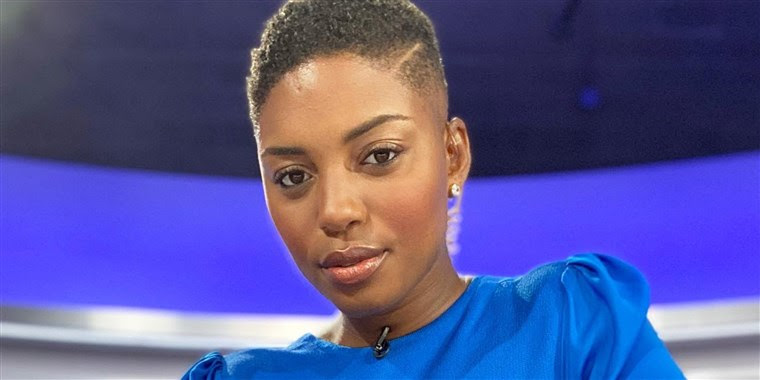 “A newscaster is embracing her natural hair in photos that are going viral,” Lindsay Lowe wrote Friday for today.com. “Lena Pringle (pictured), an anchor and reporter with WJXT News4JAX in Jacksonville, Florida, rocked a short, natural hairstyle, and on Wednesday, she shared pictures of her look on Twitter. ‘Shoutout to the people who told me I wouldn’t be able to get/keep a broadcast news job with a short natural haircut,’ she wrote. ‘Jokes on you, huh?’ She also shared a video of her look. Her original tweet has racked up more than 100,000 likes as of Friday. . . .”
“A newscaster is embracing her natural hair in photos that are going viral,” Lindsay Lowe wrote Friday for today.com. “Lena Pringle (pictured), an anchor and reporter with WJXT News4JAX in Jacksonville, Florida, rocked a short, natural hairstyle, and on Wednesday, she shared pictures of her look on Twitter. ‘Shoutout to the people who told me I wouldn’t be able to get/keep a broadcast news job with a short natural haircut,’ she wrote. ‘Jokes on you, huh?’ She also shared a video of her look. Her original tweet has racked up more than 100,000 likes as of Friday. . . .”
- “Ben Brantley, the influential New York Times theater critic, will leave the job next month,” Greg Evans reported Thursday for Deadline. Evans also wrote, “The vacancy will provide the Times with an opportunity to expand the diversity of the newspaper’s chief theater critic line-up. Maya Phillips, a woman of color, is an arts criticism fellow and frequently reviews stage works, but the chief critic job has traditionally been held by white men. . . .” Gilbert Cruz, who is Hispanic and raised in the Bronx, is culture editor.
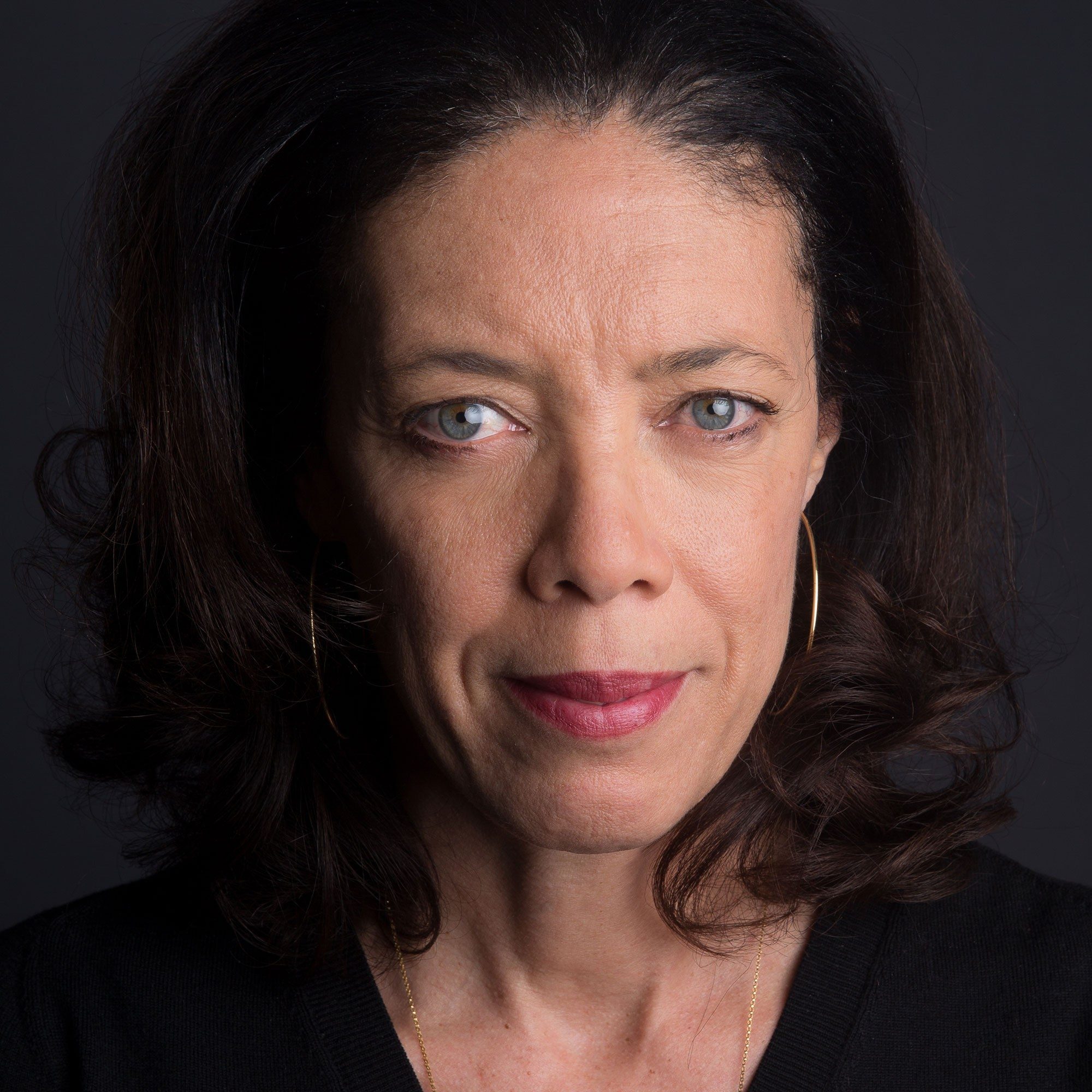 ProPublica announced on Tuesday that six editors and reporters have been promoted, and a new editorial masthead has been formally created. Among the changes: Ginger Thompson (pictured), senior reporter, has been promoted to chief of correspondents; Diego Sorbara, standards editor, becomes assistant managing editor; Alexandra Zayas, senior editor, is assistant managing editor; and reporter Talia Buford becomes ProPublica’s first-ever talent development director.
ProPublica announced on Tuesday that six editors and reporters have been promoted, and a new editorial masthead has been formally created. Among the changes: Ginger Thompson (pictured), senior reporter, has been promoted to chief of correspondents; Diego Sorbara, standards editor, becomes assistant managing editor; Alexandra Zayas, senior editor, is assistant managing editor; and reporter Talia Buford becomes ProPublica’s first-ever talent development director.
- “For every dollar a white staffer makes, Hispanic staff make 99 cents, Asian staff make 97 cents, and Black staff make 95 cents,” [PDF] according to a report from the Star Tribune Guild in Minneapolis. “American Indian staff make 96 cents, and those who identify as two or more races make 94 cents, though the small number of staff reporting two or more races or American Indian makes drawing a statistical conclusion difficult.” The disparity is greater for overscale, or merit pay. “For every dollar white staffers make in overscale pay, Asian staff make 95 cents and American Indian staff make 90 cents. Black staff make 60 cents on the dollar. . . .”
- “Following more than a decade of public strife, Great Barrington, a small idyllic town in the Berkshires, has finally embraced hometown hero W.E.B. Du Bois, the iconic civil rights activist, scholar, and founder of the NAACP,” Deanna Pan reported Sept. 4 for the Boston Globe. “At the end of a two-and-a-half-hour Zoom meeting — in which dozens testified, mostly in favor of the proposed change — the Berkshire Hills Regional School District committee voted unanimously Thursday evening to rename the local middle school in honor of Great Barrington’s perhaps best-known native son. . . .” Du Bois also edited the NAACP’s magazine The Crisis.
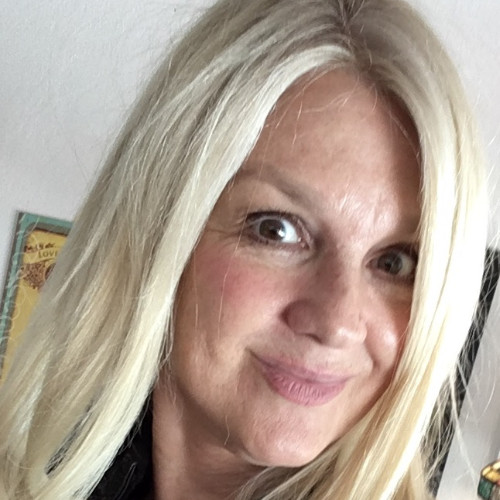 Jan Tuckwood (pictured) a longtime editor at the Palm Beach Post in Florida, explained to Journal-isms why she changed educator Mary McLeod Bethune‘s references to “Negro” to “Black” (scroll down to Short Takes) in publishing Bethune’s “last will and testament.” “I’ve edited three history books. I’m careful about editing any historic documents,” Tuckwood messaged Wednesday “When I found Dr. Bethune’s testimony in doing research for a series on 100 years of women’s voting rights, I was moved by her timeless words, and I decided to reprint it. I wanted the timeless power of her words to be appreciated, and I was concerned that some readers might be sidetracked from her points by the word ‘Negro’ — so I edited that and was transparent about it with my editor’s note, so readers would know that I had done that. There is no wider policy regarding edits like this — I made a judgment in this specific case based on my experience with historic works. . . .”
Jan Tuckwood (pictured) a longtime editor at the Palm Beach Post in Florida, explained to Journal-isms why she changed educator Mary McLeod Bethune‘s references to “Negro” to “Black” (scroll down to Short Takes) in publishing Bethune’s “last will and testament.” “I’ve edited three history books. I’m careful about editing any historic documents,” Tuckwood messaged Wednesday “When I found Dr. Bethune’s testimony in doing research for a series on 100 years of women’s voting rights, I was moved by her timeless words, and I decided to reprint it. I wanted the timeless power of her words to be appreciated, and I was concerned that some readers might be sidetracked from her points by the word ‘Negro’ — so I edited that and was transparent about it with my editor’s note, so readers would know that I had done that. There is no wider policy regarding edits like this — I made a judgment in this specific case based on my experience with historic works. . . .”
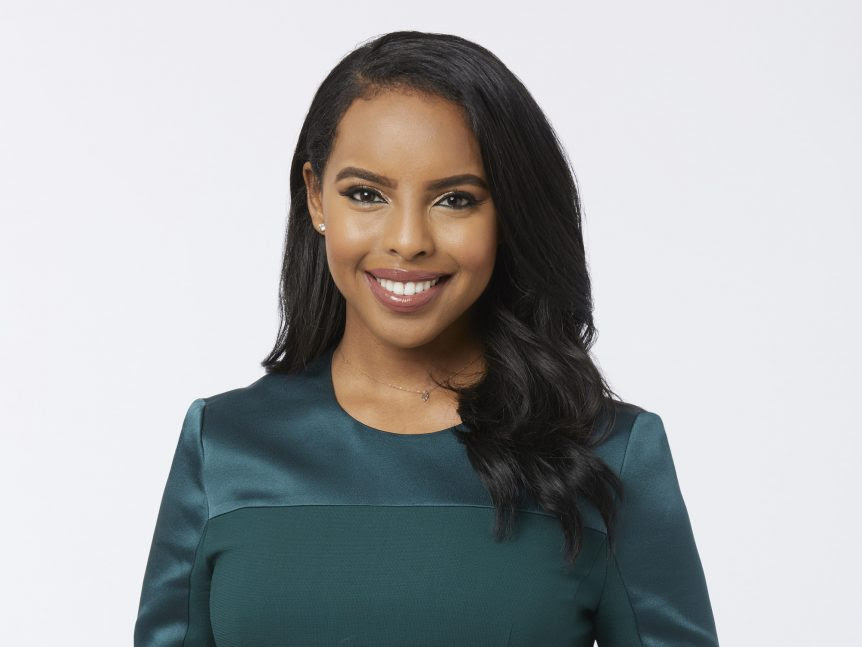 “ABC News has named Mona Kosar Abdi (pictured) co-anchor of World News Now and America This Morning,” Jason Lynch reported Wednesday for Adweek. ABC News President James Goldston told staff members, “Mona joined ABC News in January 2019 as a Multi-Platform Reporter in Washington, D.C. She reported on a wide-range of stories in the nation’s capital. . . . Plus, Mona was a key member of the ABC News team that provided around-the-clock coverage of the impeachment of President Trump for the network’s affiliates. . . .”
“ABC News has named Mona Kosar Abdi (pictured) co-anchor of World News Now and America This Morning,” Jason Lynch reported Wednesday for Adweek. ABC News President James Goldston told staff members, “Mona joined ABC News in January 2019 as a Multi-Platform Reporter in Washington, D.C. She reported on a wide-range of stories in the nation’s capital. . . . Plus, Mona was a key member of the ABC News team that provided around-the-clock coverage of the impeachment of President Trump for the network’s affiliates. . . .”
- “ABC News will launch a new series exploring ‘the racial reckoning sweeping the nation and whether it leads to lasting reconciliation,‘ ” Alex Weprin reported Tuesday for the Hollywood Reporter. “The monthlong series will be called Turning Point, reviving the name of a special series that last aired in the 1990s. Turning Point will kick off September 8 in the current Nightline timeslot of 12:05 AM, supplemented by special reporting across all of ABC’s news and talk programming. . . . Anchors and correspondents confirmed to appear on the programming include Juju Chang, Byron Pitts, Diane Sawyer, Robin Roberts, Michael Strahan, George Stephanopoulos, David Muir, Linsey Davis, Amy Robach, John Quiñones, Pierre Thomas, Deborah Roberts, Steve Osunsami, Martha Raddatz, and others. . . .”
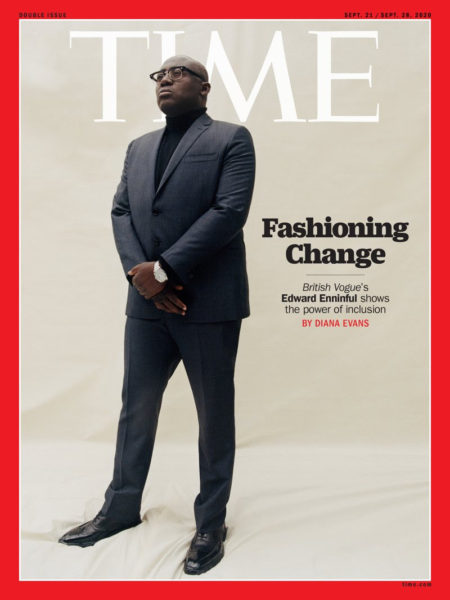
- British Vogue editor in chief Edward Enninful “is the most powerful Black man in his industry, sitting at the intersection of fashion and media, two fields that are undergoing long-overdue change and scrambling to make up for years of negligence and malpractice,” Diana Evans wrote Friday for Time. “Since becoming the only Black editor in history to head any of the 26 Vogue magazines — the most influential publications in the multibillion-dollar global fashion trade — he has been tipped as the successor to Anna Wintour, the iconic editor of American Vogue and artistic director for Condé Nast. The privately held company is navigating, on top of an advertising market battered by the COVID-19 pandemic, public controversies around representation both in its offices and on its pages. . . .”
- “A Mexican journalist who wrote about crime in the violent Gulf Coast state of Veracruz was found beheaded on Wednesday, local media reported, the latest grisly murder of a reporter in one of the world’s most dangerous nations for journalists,” Lizbeth Diaz reported Wednesday for Reuters. “The body of Julio Valdivia, 44, who specialized in the ‘nota roja’ journalism that focuses on gruesome crime and violence, was found in the remote Tezonapa municipality, about 100 kilometers from the state capital, Veracruz. A staff member at Valdivia’s Diario El Mundo local newspaper in Veracruz said initially it was suspected that Valdivia might have been run over by a train, but that was ruled out by the prosecutor’s office. . . .”
To subscribe at no cost, please send an email to journal-isms-subscribe@yahoogroups.com and say who you are.
Facebook users: “Like” “Richard Prince’s Journal-isms” on Facebook.
Follow Richard Prince on Twitter @princeeditor
Richard Prince’s Journal-isms originates from Washington. It began in print before most of us knew what the internet was, and it would like to be referred to as a “column.” Any views expressed in the column are those of the person or organization quoted and not those of any other entity. Send tips, comments and concerns to Richard Prince at journal-isms-owner@yahoogroups.com
View previous columns (after Feb. 13, 2016).
- Diversity’s Greatest Hits, 2018 (Jan. 4, 2019)
- Book Notes: Is Taking a Knee Really All That? (Dec. 20, 2018)
- Book Notes: Challenging ’45’ and Proudly Telling the Story (Dec. 18, 2018)
- Book Notes: Get Down With the Legends! (Dec. 11, 2018)
- Journalist Richard Prince w/Joe Madison (Sirius XM, April 18, 2018) (podcast)
- Richard Prince (journalist) (Wikipedia entry)
- February 2018 Podcast: Richard “Dick” Prince on the need for newsroom diversity (Gabriel Greschler, Student Press Law Center, Feb. 26, 2018)
- Diversity’s Greatest Hits, 2017 — Where Will They Take Us in the Year Ahead?
- Book Notes: Best Sellers, Uncovered Treasures, Overlooked History (Dec. 19, 2017)
- An advocate for diversity in the media is still pressing for representation, (Courtland Milloy, Washington Post, Nov. 28, 2017)
- Morgan Global Journalism Review: Journal-isms Journeys On (Aug. 31, 2017)
- Diversity’s Greatest Hits, 2016
- Book Notes: 16 Writers Dish About ‘Chelle,’ the First Lady
- Book Notes: From Coretta to Barack, and in Search of the Godfather
- Journal-isms’ Richard Prince Wants Your Ideas (FishbowlDC, Feb. 26, 2016)
- “JOURNAL-ISMS” IS LATEST TO BEAR BRUNT OF INDUSTRY’S ECONOMIC WOES (Feb. 19, 2016)
- Richard Prince with Charlayne Hunter-Gault,“PBS NewsHour,” “What stagnant diversity means for America’s newsrooms” (Dec. 15, 2015)
- Book Notes: Journalists Follow Their Passions
- Book Notes: Journalists Who Rocked Their World
- Book Notes: Hands Up! Read This!
- Book Notes: New Cosby Bio Looks Like a Best-Seller
- Journo-diversity advocate turns attention to Ezra Klein project (Erik Wemple, Washington Post, March 5, 2014)
